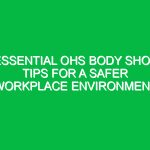Welcome to Today’s Toolbox Talk
Hello team! Thank you all for gathering today for our Toolbox Talk. Our focus for this session is on Surveying (Construction) and how it plays a crucial role in ensuring our work is not only accurate but also safe. As we embark on our daily tasks, it’s essential to understand how proper surveying can mitigate risks and promote a safer working Environment. Let’s dive into some essential tips and practices that every team member should be aware of.
Understanding Surveying in Construction
Surveying in construction refers to the process of measuring and mapping out land to determine boundaries, elevations, and the positioning of structures. It’s not just about getting the right measurements; it’s about ensuring that we build safely and comply with Regulations. Accurate surveying helps in:
- Defining property boundaries
- Establishing the layout of a construction project
- Ensuring compliance with local zoning laws
- Preventing costly errors or rework
The Importance of Surveying for Safety
Now, you might wonder, how does surveying relate to health, safety, and the environment (HSE)? Well, improper surveying can lead to various Hazards:
- Structural Failures: Inaccurate measurements may lead to unstable structures, risking the Safety of workers and future occupants.
- Site Hazards: Poorly marked boundaries can result in accidental encroachments into Hazardous Areas or conflicts with existing utilities.
- Legal Issues: Failure to adhere to surveying regulations can lead to legal disputes, fines, or project delays.
Key Concepts in Surveying (Construction)
Before we dive into tips, let’s review some key concepts that are essential in surveying:
- Elevation: Refers to the height of a point in relation to sea level. Knowing elevation is critical for drainage and foundation work.
- Benchmark: A fixed point of known elevation used as a reference for measuring other elevations.
- Coordinates: The grid system used to define the exact location of points on the land.
Best Practices for Effective Surveying
Here are some Best Practices that every worker should follow to ensure effective and safe surveying:
1. Use Quality Tools
Always utilize calibrated and well-maintained surveying instruments such as total stations, GPS units, and levels. Faulty equipment can lead to inaccurate measurements and safety hazards.
2. Follow Safety Protocols
Before starting any surveying tasks, ensure that you wear appropriate Personal Protective Equipment (PPE), such as hard hats, vests, and Safety Glasses. Familiarize yourself with the site layout and any potential hazards.
3. Verify Site Conditions
Conduct a thorough site inspection before beginning the surveying process. Look for changes in the environment, such as vegetation growth, erosion, or new structures that may affect your measurements.
4. Communicate with the Team
Effective communication among team members is vital. Discuss the surveying plan with your colleagues, and ensure everyone understands their roles and responsibilities.
5. Document Everything
Maintain accurate records of all measurements and observations. This documentation is crucial for future reference and can help resolve disputes or issues.
Potential Hazards Related to Surveying
As with any job, surveying comes with its own set of risks. Here are some potential hazards to keep in mind:
- Tripping Hazards: Always be aware of your surroundings. Uneven ground, tools, and materials can pose serious tripping risks.
- Utility Strikes: Before starting any digging or layout work, ensure that all underground utilities are clearly marked and known.
- Weather Conditions: Be mindful of weather changes that may affect visibility or create unsafe working conditions.
Real-Life Examples of Surveying Challenges
Let’s consider a couple of hypothetical scenarios to illustrate the importance of effective surveying:
Scenario 1: The Misplaced Foundation
A construction crew once began pouring a foundation without proper surveying. They relied on outdated maps and failed to establish current benchmarks. As a result, the foundation was laid several feet off from the planned site, leading to costly rework and delays. This situation could have been avoided with accurate and thorough surveying.
Scenario 2: Utility Conflicts
Another team started excavation without confirming the locations of underground utilities. They inadvertently struck a gas line, leading to a hazardous situation and a major safety incident. This emphasizes the need for verifying utility locations before starting any work.
Actionable Advice for Surveying (Construction)
To wrap up our Toolbox Talk, here’s some actionable advice to help you implement effective surveying practices:
- Always carry a surveying checklist to ensure that you don’t miss any critical steps.
- Engage in regular Training sessions to stay updated on the latest surveying technologies and Best Practices.
- Encourage a culture of safety where team members feel comfortable speaking up about potential hazards.
Regulations and Standards
It’s crucial to adhere to local regulations and standards governing surveying practices. Familiarize yourself with guidelines set forth by regulatory bodies such as the Occupational Safety and Health Administration (OSHA) and your local building codes. Compliance not only promotes safety but also protects the company from legal repercussions.
Conclusion
In conclusion, understanding and implementing effective surveying practices are vital in our construction projects. By following the tips and best practices outlined in today’s Toolbox Talk, you can help ensure both your safety and the safety of your colleagues. Remember, a well-surveyed site leads to fewer accidents and a smoother construction process. Thank you for your attention, and let’s commit to making our work environment safer for everyone!


